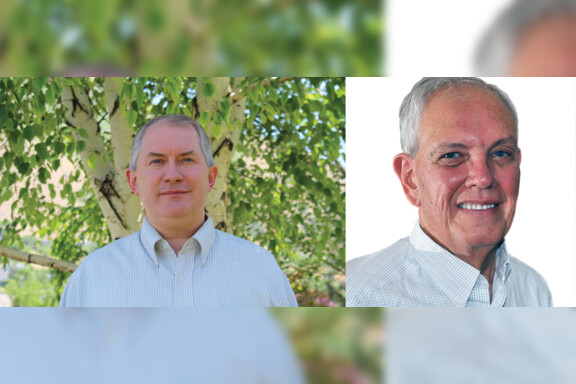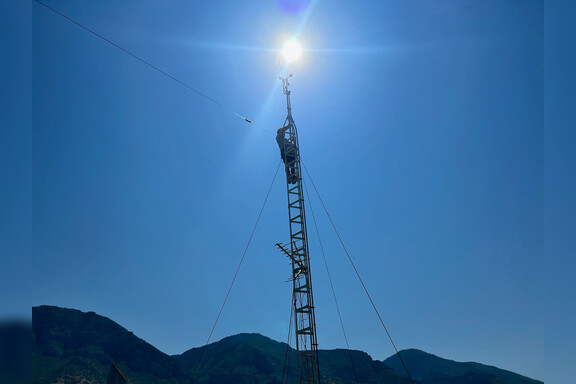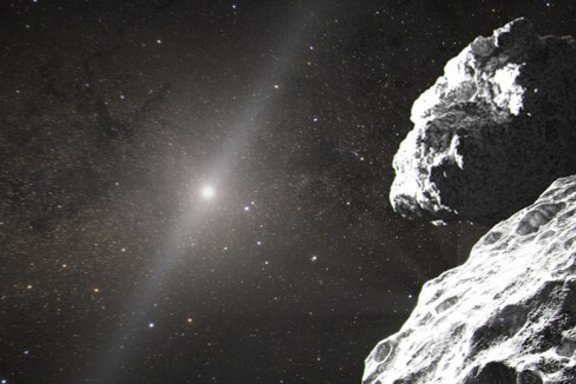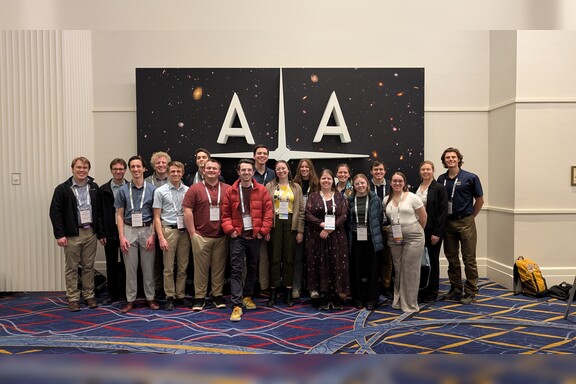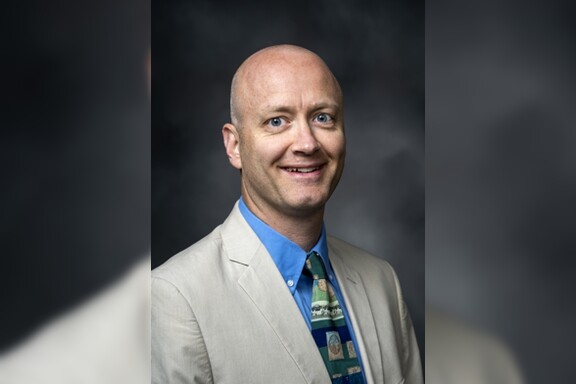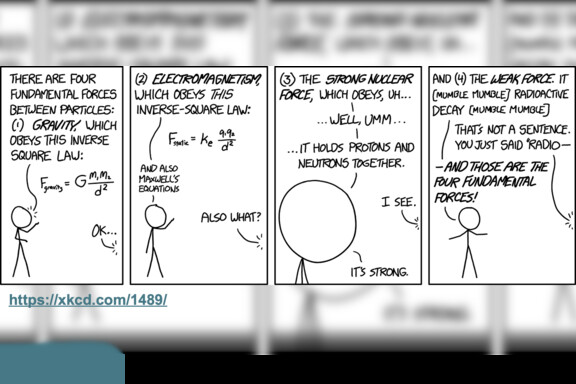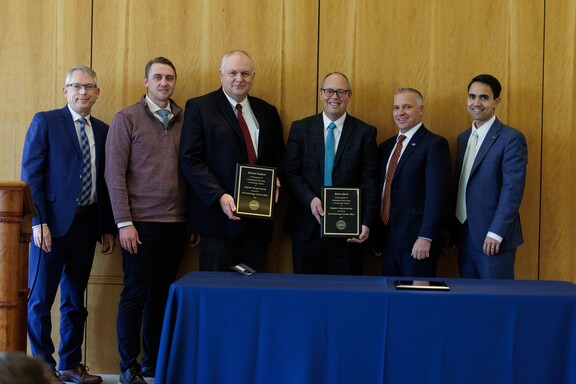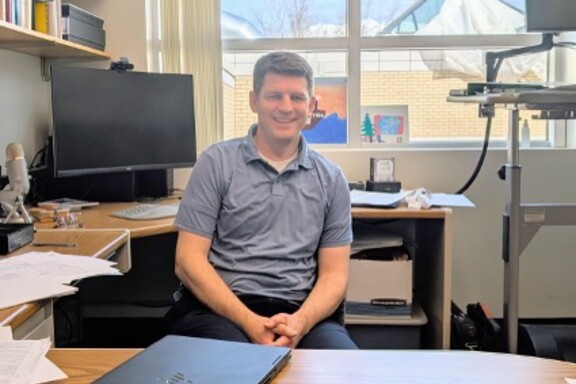Trying to get to the bottom of a mystery
Talk about the ride of a lifetime.
Free-falling over the Gulf of Mexico in the belly of NASA's "Vomit Comet" aircraft – so named because it can make researchers onboard sick – Brigham Young University students recently got a feel for what it's like to spacewalk (click for video) as they conducted a physics experiment in zero gravity.
"It's so different from anything else you can imagine," said Krystle Farnsworth, a sophomore from Arizona majoring in mechanical engineering. "I did some somersaults and I also looked out the window – it was pretty amazing seeing the horizon at random angles."
The aircraft, produces weightlessness in 25-second increments by executing a series of steep climbs followed by free falls. As the plane rapidly descends, passengers fall at the same rate as the plane and leave the cabin floor. The aircraft was used to film space scenes in "Apollo 13."
"It's kind of like [doing somersaults] in a pool," said Farnsworth. "But there's no resistance. You keep going."
Fun aside, the four undergraduate physics students used the plane's weightless environment to conduct an experiment that allowed them to rule out the effect of Earth's pull on tiny dust particles levitated in a bright laser beam (click for video).
"We had done some preliminary experiments and were expecting that the particles would stay trapped in zero gravity," said Nathan Powers, a senior from Texas majoring in physics and captain of the student team. "Now we can go on to look at the other options as to why the particles are trapping in the laser beam."
NASA put the group through a week of training to prepare them for the flight. Before that, the students had to design and build the scientific equipment that would allow them to conduct the experiment.
"We had to basically start from scratch because there weren't any parts that fit our design," said Farnsworth. "We started from blocks of aluminum and just built everything from the bottom up."
A project like this is the kind of thing you'd expect graduate students to do, said faculty advisor Justin Peatross.
"Here at BYU, undergraduates really get involved in research, especially in our department," said Peatross, an associate professor of physics. "This team did a lot to prepare for this. They designed the experiment; they machined the parts and put them together. They had to fill out large reports for NASA to prove that the experiment could be done safely. They've shown a lot of initiative."
The path to the Vomit Comet started a few years ago when students discovered they could levitate particles in a laser beam, said Peatross. The tiny particles could be made of almost any material. (Click here for more info about particle levitation.)
"We looked around and found out that some others had already observed the phenomenon, but they explained it in a lot of differing ways," said Peatross. "What actually is taking place is a mystery."
The budding physicists began performing experiments to determine why the particles stay trapped.
"The intuitive idea is that the side of the particle that gets heated the most, namely the side that's upstream in the laser beam, is going to bounce molecules off of it faster, causing it to leave the focus of the beam," said Peatross. "But that doesn't happen, and there's no easy reason why the particle should stay in the beam."
Over the years, various student experiments have revealed that the laser must be surrounded by gas, such as air, to successfully levitate particles, that many different particle shapes can be trapped and that trapped particles quiver in the laser with accelerations that far exceed the force of gravity.
One possible explanation for the phenomenon that required exploration was that the heating of the particles created convection currents in the surrounding air, resulting in buoyant forces, said Peatross.
That explanation, however, requires the presence of gravity – if there isn't any gravity, heat won't rise, and there won't be any convection currents.
So the students set up another on-campus experiment to investigate the role of gravity by dropping an apparatus for a half-second with an onboard video camera. The apparatus slid along a rail aligned parallel to a laser beam.
"What we found was a little bit ambiguous," said Peatross. "It was a short free fall, and there were some problems with a shaky track, but we were pretty sure the particle stayed trapped in the laser."
Last month, the four students – Powers, Farnsworth, junior Matthew Turner, and sophomore Jacob Campbell – traveled to Houston to perform their extended experiment on the Vomit Comet.
"This was one more test to eliminate the possibility that gravity plays a role," said Peatross. "On the jet, the particle stayed trapped during free fall. The students moved the laser beam back and forth, and the particle stayed with the beam. We can eliminate any models that require gravitational acceleration in their explanation."
With the successful experiment behind them, Farnsworth and the other students are excited about their experience and what it taught them.
"It's amazing to put what [we] learned in the classroom to use and have [our experiment] produce data and results [we] can actually do something with," said Farnsworth. "We got some really good data."
BYU Magazine reported that Justin Peatross and Scott Bergeson reeled in prestigious CAREER awards from the National Science Foundation in 2001. Bergeson also uses lasers in his research to cool atoms to temperatures near absolute zero.
More Information on This Article
News and Events
